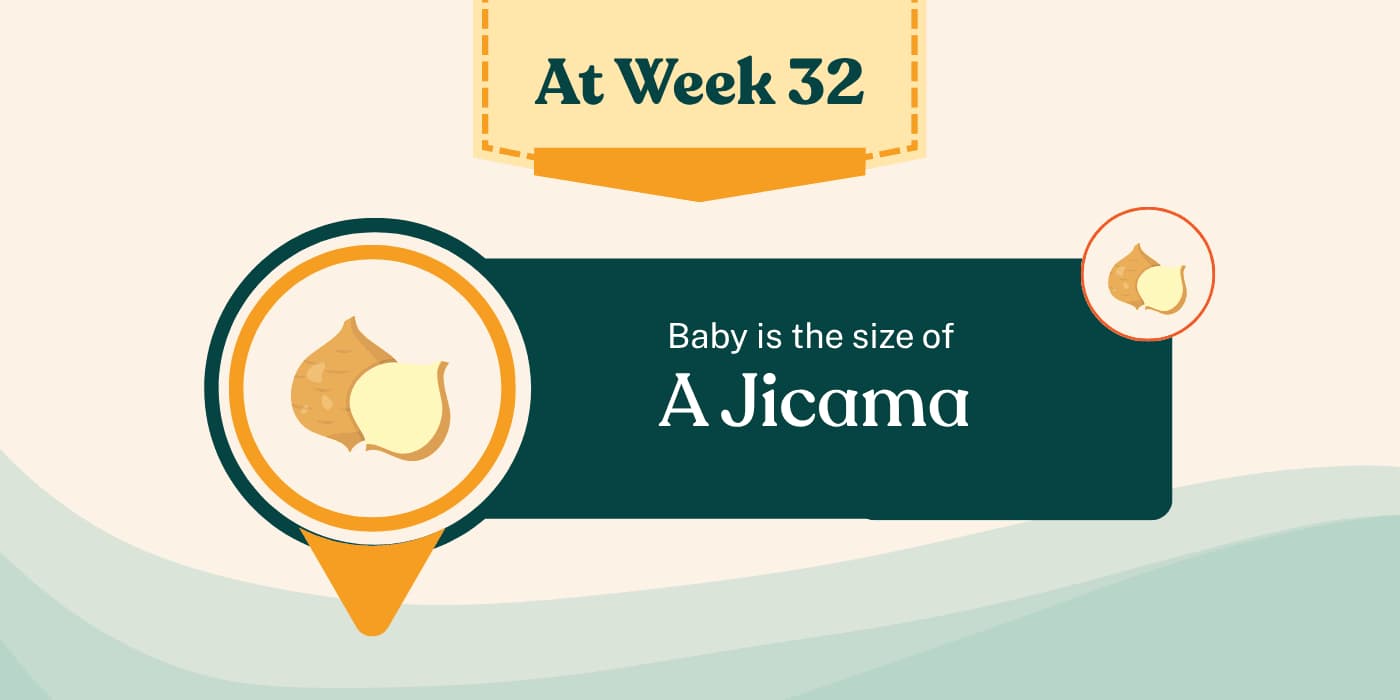Your Pregnancy at Week 32
Science photo library
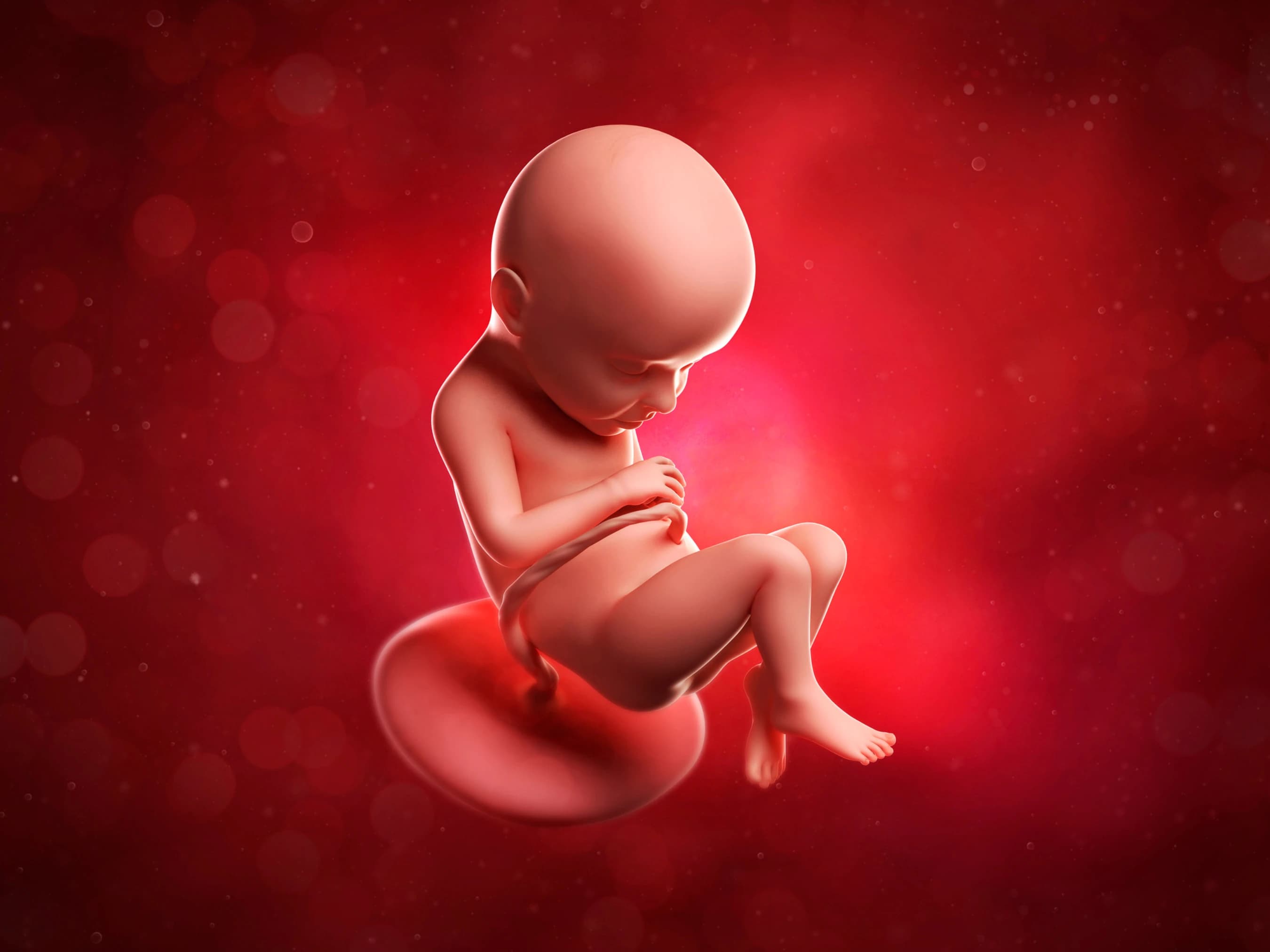
Written by Mindsmaking Medical Writer
Fact Checked by Mindsmaking Professionals
17th, November, 2025
At 32 weeks pregnant, your baby has gained significant weight and is nearly ready for life outside the womb. They are roughly the size of a jicama.
Hurray! You are now 32 weeks pregnant. By now, your baby has gained a lot of weight and has almost finished developing its organs for life outside the womb. Your baby should be around the size of a Jicama.
Key Takeaways
Your baby is growing rapidly, and most internal organs are fully developed, except for the lungs, which are still maturing.
Your baby measures around 16.69 inches and weighs about 1702 grams, comparable to a jicama.
The top of your uterus is about 5 inches above your belly button, which may pressure your diaphragm, causing shortness of breath and more frequent heartburn.
At 32 weeks pregnant, your belly should measure 30 to 34 centimetres from the top of your uterus to your pelvic bone.
It's normal for your breasts to leak colostrum, a thin, yellowish fluid that prepares you for breastfeeding. If it soaks through your bra or causes discomfort, nursing pads can help manage it.
If you're having contractions or suspect you might be, it's important to contact your doctor.
Strengthen your pelvic floor muscles with regular exercises (Kegels) to help prevent urine leakage and support your organs during pregnancy and postpartum.
Understanding the signs of labour and having a plan in place is crucial. Your partner's healthcare provider might review this with you. Being informed helps both you and your partner prepare for the delivery process.
If you have a planned C-section, find out how long your hospital stay will be so you can prepare accordingly.
Take a peek

Breathing exercises
Your baby inhales amniotic fluid to practise how to use their lungs.
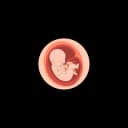
Fully formed organs
Apart from the lungs, all of your baby's major organs are fully developed. However, if your baby arrives this week, they will probably be fine.
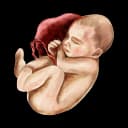
Skin changes
This week, your little one's skin has become opaque rather than transparent.
Baby Development at Week 32
Your baby is continuing to grow rapidly. The internal organs are generally fully developed and prepared for life outside the womb, except the lungs, which are still maturing. Even though they aren't fully developed yet, your baby is practising breathing by inhaling amniotic fluid. This practice helps their lungs get ready for breathing air after birth. Additionally, your baby's skeleton is fully formed, but the bones are still soft and flexible, which helps them fit through the birth canal more easily. (1)
Your baby is busy practising essential skills needed for life outside the womb, such as swallowing, sucking, and kicking. Your baby's toenails have been growing and are now visible. It's time to get those baby nail clippers ready, you'll be trimming those tiny nails before you know it!
As the space inside your uterus becomes smaller, you might notice that your baby's movements feel different. However, there should still be a consistent pattern of movement. If you notice a significant change or reduction in these movements, it's important to go to the maternity unit immediately, as it could indicate a problem with your baby.
Your baby's skin has become more opaque and less transparent. It now resembles the texture and appearance of your skin rather than being see-through.
Mindsmaking
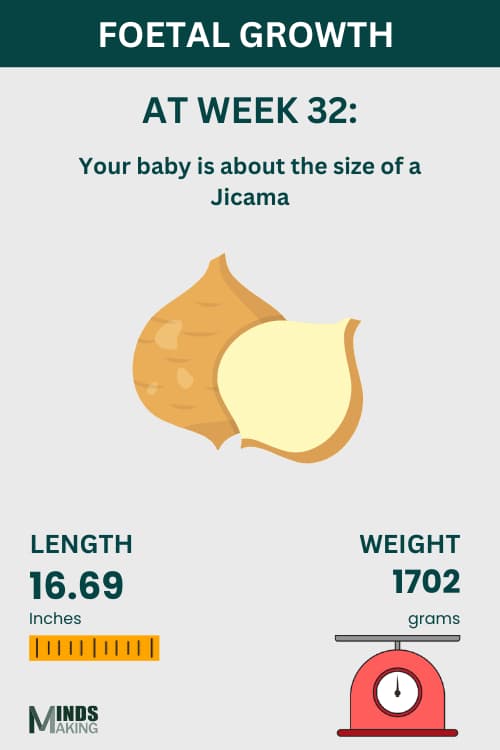
Body Changes at Week 32
At this stage in your pregnancy, the top of your uterus is about 5 inches above your belly button. This high position can put pressure on your diaphragm, making you feel short of breath or cause difficulty breathing. This pressure can also lead to more frequent heartburn.
You are likely gaining around a pound per week. Your blood volume has increased by 40% to 50% over the past 32 weeks to support you and your baby. This extra blood is also crucial for compensating for the blood loss you'll experience during delivery.
You might notice swelling in your ankles, fingers, and face. If this swelling appears suddenly or is severe, contact your physician, as it could be a sign of preeclampsia, a condition marked by high blood pressure. You may also experience haemorrhoids, sore breasts, constipation and indigestion.
In terms of visible changes, your belly button might be sticking out more, and you could see an increase in white vaginal discharge (leukorrhea). Internally, your cervix is becoming thinner and softer, a process known as "effacement," which helps it open during childbirth. Additionally, your baby is moving lower into your abdomen.
As you are deep into the third trimester, your healthcare provider or midwife might adjust the frequency of your prenatal visits, moving from monthly to every two weeks.
Read This Next
No posts available
Baby Bump At Week 32
At 32 weeks pregnant, your belly should measure approximately 30 to 34 centimetres from the top of your uterus to your pelvic bone. If you're carrying twins, you might feel more weighed down compared to someone with a singleton pregnancy at the same stage. Additionally, twin pregnancies tend to be closer to delivery, as they are usually considered full-term at 37 weeks, most lasting between 35 and 36 weeks.
Pregnancy Symptoms at Week 32

Breast leakage
It's normal for your breasts to start leaking a thin, yellowish fluid known as colostrum. This fluid is your body's way of preparing for breastfeeding by providing early nourishment for your baby. If the colostrum leaks enough to soak through your bra or cause discomfort, nursing pads can help manage the situation. There's no harm in using them at this stage.

Appetite changes
As you approach the end of your pregnancy, you might notice a decrease in hunger or difficulty eating large meals. This is because your growing baby, nearing their birth weight, is taking up more space and pressing on your internal organs, making it harder to eat big portions. Despite this, it's important to maintain a nutritious diet during the final weeks of pregnancy. You'll need an extra 300 calories daily in the third trimester to support you and your baby. To manage this, try eating smaller, frequent meals and snacks that balance protein, carbohydrates, and healthy fats.

Increased vaginal discharge
Increased vaginal discharge during pregnancy is your body's way of preparing for delivery by helping to prevent infection. One important thing to watch is the mucus plug, a thick, sticky (sometimes bloody) substance that seals the cervix. This plug is usually expelled a few days or hours before labour begins. Additionally, pay attention to any discharge that appears more watery and constant. If you experience a steady flow that resembles water rather than normal discharge could mean your water has broken, which may indicate a slow leak. In this situation, you should immediately contact your OB and head to the hospital.

Itchy skin
As your skin stretches to accommodate the growth of your belly and breasts, it's common to experience itching during pregnancy. Hormonal changes and sensitivity to heat in the summer and dry air in the winter can exacerbate these symptoms. If you have a pre-existing skin condition like eczema, you might find that your symptoms worsen during pregnancy. If basic remedies like moisturiser or a warm oatmeal bath don't relieve the itchiness, consult your provider about topical, over-the-counter anti-itch medications. Most of these are safe to use during pregnancy, but it's important to get your provider's approval before starting any new treatment.

Stretch marks
As your baby and body grow, rapid skin stretching may lead to stretch marks, particularly on your belly and breasts. While not all women get them, about half do, with factors like genetics, rapid weight gain, multiple pregnancies, carrying a large baby, and excess amniotic fluid increasing the risk. Though many creams claim to help, there's limited evidence they prevent or reduce stretch marks. Maintaining a healthy weight during pregnancy can slightly lessen their severity, but this isn't always manageable. Fortunately, stretch marks typically become less noticeable six to twelve months postpartum as they fade and lighten. If they're a concern, consult a dermatologist for options to minimise them.
Pregnancy Concerns at Week 32
If you're having contractions or suspect you might be, it's important to contact your doctor. Additionally, you should reach out to your doctor if you experience any of the following symptoms:
- Vaginal bleeding or leakage of fluid
- Fever
- Persistent headache
- Severe abdominal or pelvic pain
- Burning sensation during urination
- Blurred vision
These symptoms could indicate potential issues that need medical attention. (3)
Health Tips for Pregnancy Week 32
Avoid overeating
To help prevent heartburn, avoid overeating by serving yourself smaller portions and resisting the urge to eat much. Eating smaller, more frequent meals, about five or six times a day, can be easier on your digestive system if you're experiencing heartburn or acid reflux. Also, avoid foods high in fat or spice, as these can aggravate your symptoms.
Eat fruits and vegetables
You've likely got your pregnancy diet under control, but it's important to continue including various fruits and vegetables. Eating a range of these ensures you get a broad spectrum of vitamins, minerals, and fibre. Aim to consume at least five servings of fruit and vegetables daily, whether as snacks or as a main meal. Fruits and vegetables should make up half of your plate to ensure a good balance. This approach supports your health and adds more colour and nutrition to your meals.
Maintain good hygiene
Maintaining good hygiene is important for everyone, but it becomes even more crucial during pregnancy, especially if you're experiencing vaginal discharge. Wearing pantyliners or cotton underwear and changing them regularly helps keep you comfortable and dry. This practice also allows you to more easily observe any changes in your discharge, such as alterations in colour or texture, which could be signs of a potential issue that might require medical attention. You can better manage your health and promptly address concerns by staying comfortable and vigilant.
Do pelvic floor exercise
During pregnancy and childbirth, your pelvic floor muscles, which support your bladder, uterus, and bowel, face a lot of strain. This can weaken the muscles, leading to issues like urine leakage when you cough or sneeze. To help prevent incontinence after childbirth, it's helpful to do pelvic floor exercises (often called Kegels) regularly. These exercises strengthen the muscles, better supporting your organs and controlling bladder function. It's best to start these exercises as early as possible to build muscle strength and improve your chances of a smoother postpartum recovery.
Soothe Itching
Itchy skin can become a common issue as your belly grows. To relieve this discomfort, use natural aloe vera gel, which is great for locking in moisture and soothing irritated skin. For even better results, mix the aloe vera gel with a moisturiser that contains vitamin E or cocoa butter, both known for their deep hydrating effects. Apply this mixture regularly, particularly after showers while your skin is still damp, to keep your skin nourished and moisturised. Additionally, drink plenty of water and wear loose, breathable clothing to minimise irritation. If the itching continues or worsens, consult your healthcare provider to ensure there are no underlying health concerns.
Advice for Partners
Are you aware of the signs of labour? It's wise to understand what these signs are and to have a plan in place for when labour starts. Your partner's healthcare provider might also review this with you. Being well-prepared and informed about labour, what actions to take, and the delivery process can benefit you and your pregnant partner.
As your baby's arrival approaches, it's natural to start reflecting on your priorities and how your life will change. It's a good time to consider what you want your life to look like once your baby is born.
If you want to be present for the birth, you might need to plan, especially if your job requires travel. Once the baby arrives, think about how you can balance time between caring for your baby and spending time with your partner. For example, working from home could be an option to help manage this balance. Discussing these plans with your partner now, around pregnancy week 32, can help ensure a smoother transition when your baby arrives.
Pregnancy Checklist for Week 32
- If you're having a planned caesarean section, it's important to find out the expected length of your hospital stay so you can make the necessary preparations,
- Although you're not full-term, these final weeks may be quite busy. To help simplify things, take a look at our list of top baby products and recommendations.
- If you're planning to travel by car to the hospital or birthing centre, doing a practice drive around 32 weeks pregnant is a good idea. This will help you gauge how long the trip takes. Additionally, consider planning alternative routes if you encounter traffic jams or road construction when you go into labour.
- Ensure you have all the newborn essentials you still need. If you haven't yet, consider planning the nursery layout and considering how you'd like to decorate it.
- Think about enrolling in antenatal classes or workshops. They offer valuable information on childbirth, breastfeeding, and newborn care.
Frequently Asked Questions
How big is my baby at pregnancy week 32?
At week thirty-two, your baby is about 16.69 inches long. This is roughly the size of a jicama and weighs about 1702 grams.
How can I tell if my baby is head down at 32 weeks?
At 32 weeks, you can often tell if your baby is head down by observing several signs. Your healthcare provider can check the baby's position through palpation or an ultrasound. You might also notice that kicks are felt higher up near your ribs, while pressure is felt lower in your pelvis, indicating the baby's head may be engaged. Additionally, the top of your uterus (fundus) might be lower if the baby is head down and positioned in your pelvis. If you have concerns, consulting your provider for an accurate assessment is best.
Is it safe to deliver at 32 weeks?
At 32 weeks, it's still a bit early for your baby to be born, as delivered before 37 weeks are classified as premature. Premature babies often need various medical treatments and may require time in a neonatal intensive care unit (NICU) until they are ready to go home. However, there's no need to worry, by now, you likely have a strong relationship with your OB, and you can trust that you and your baby will receive excellent care.
How much "should" you be walking at 32 weeks pregnant?
Walking during pregnancy is an excellent way to ease aches and pains, lift your mood and energy levels, and keep your body strong and fit. It is recommended to get around 150 minutes of moderate-intensity aerobic exercise each week, which can include brisk walking. Make sure to walk at a pace that suits you and keep track of how you feel, listen to your body and take breaks whenever necessary.
Why am I feeling pressure in my pelvis at 30 weeks pregnant, and how can I relieve it?
As your pregnancy progresses, your baby starts moving down into your pelvis in preparation for birth, which can create some pressure in that area. This feeling of pelvic pressure can also be related to pelvic girdle pain, a condition where hormones loosen your ligaments, and your growing baby puts extra pressure on your joints. To help alleviate this pressure, try to stay active. Get up and move around every 30 minutes if you've been sitting for a long time, stand with weight on both legs rather than one, and keep your legs together when turning over in bed. If the discomfort is significant, consult your practitioner; they might suggest seeing a physical therapist who can provide exercises to help manage the pain.
Was this article helpful?
How many stars are you giving this article?
Leave a comment
Your email address will not be published.
